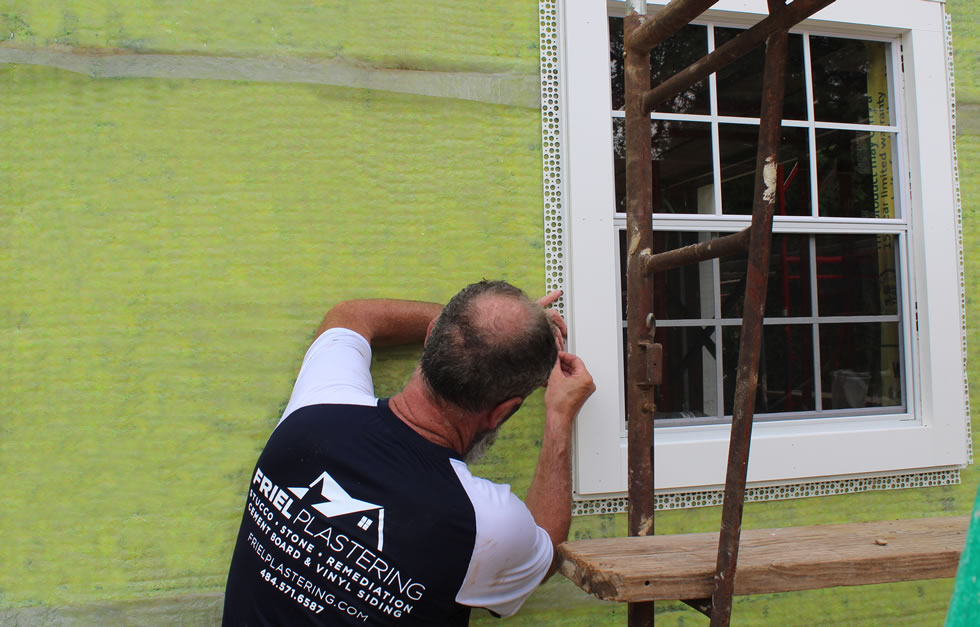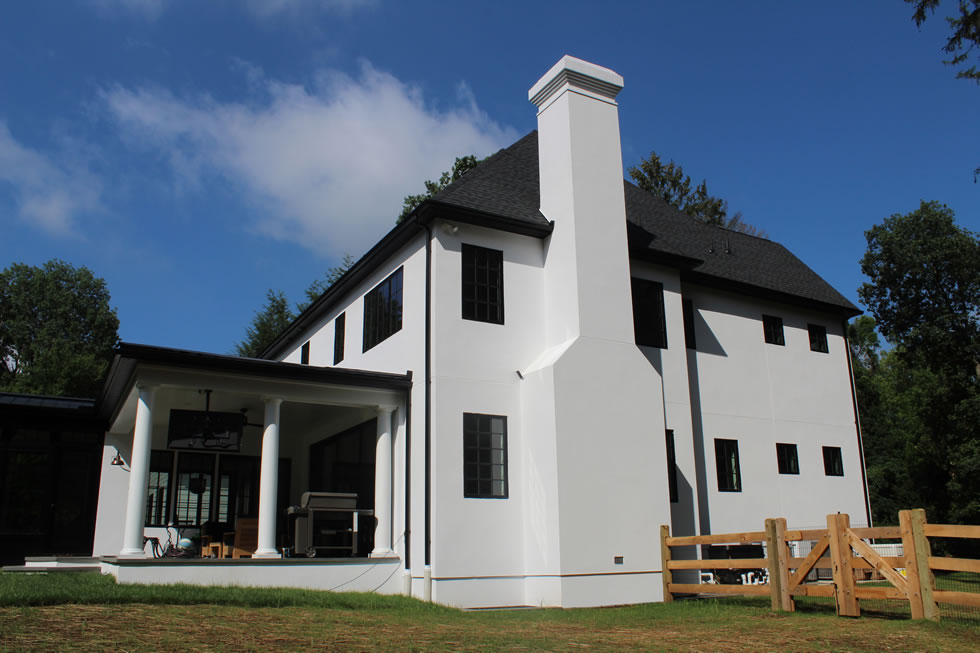
Friel Plastering & Stucco, Inc. of Haverford, Pa. has been in the stucco, stonework and siding business for the past two decades, performing about 250 stucco installation and remediation jobs a year in the greater Philadelphia area. During that time, owner Denis Friel noticed a reoccurring problem in exterior cladding installations throughout the area: moisture intrusion leading to extensive and costly home damage.
"We do a lot of remediation work and 90 percent of the homes we go to have exterior cladding installed incorrectly or without a proper drainage system," said Friel. "Badly installed stucco can crack, but it’s not so much the damage to the stucco as it is damage behind the walls – the substrates, studs and framing – that presents the biggest problem."
According to Friel, oriented strand board (OSB) lies directly behind the exterior cladding of many homes. Often utilized as a more cost-effective alternative to plywood, the porous nature of OSB makes it especially susceptible to water damage.
"When moisture from rain gets trapped behind the walls, it just rots from the inside out," said Friel. "And it can happen pretty quickly, within weeks, if the cladding is not installed properly. For a typical 4,000 square-foot home in this area, that kind of remediation work can cost $130,000 to $180,000 depending on the damage. No one wants to spend $500,000 on a house and a few years later, discover that it’s leaking."

In addition to the structural challenges created by improperly installed cladding, homeowners can end up with compromised air quality if mold and mildew spread to the inside of the home. Friel said that greater Philadelphia housing stock consists of a mixture of new and recent construction, as well homes built more than 100 years ago – before building codes and contractor education addressed moisture control behind exterior cladding.
"People are starting to realize that you can’t put up veneer stone, stucco, masonry siding and other cladding and not have a proper drainage system," said Friel. "Weep screed is the product that most people are currently using for drainage at the wall base. However, it doesn’t do enough to get rid of the water properly."
Friel Plastering & Stucco, Inc. has been using the AMICO HYDRODRY® system, a new self-draining vented wall system for use behind stucco, veneer stone, fiber cement and other exterior claddings. The product creates a dedicated drainage and ventilation cavity behind exterior walls with a special drainage channel design that helps prevent stucco flare out and cracks, as is often the case in stucco installations utilizing traditional weep screed products. The system also incorporates a unique venting that allows evaporated moisture to escape from the top of the cladding.
Friel said his team has installed the new system on approximately 40 homes in the area and that the results have been impressive.
"Everyone has been very pleased with the results," said Friel. "We have had no moisture problems, complaints or call-backs. A lot of contractors are concerned about solving the immediate problem of remediation, but this product allows us to correct the problem, so the home is still standing in 100 years."
Friel explained that the system is especially helpful around windows and other penetrations, which tend to present the most challenge to installers of exterior cladding.
"While you can’t stop the rain, you don’t want the wood to get wet," said Friel. "In the event that water gets in, you need a system with airflow to get water out of the house. I believe this product is the wave of the future because contractors and homeowners alike will want to have it."
For more information about HYDRODRY, visit amicoglobal.com.
